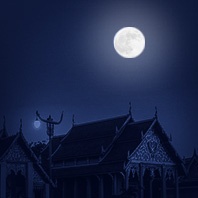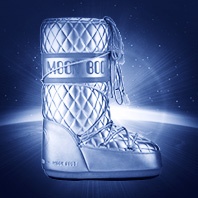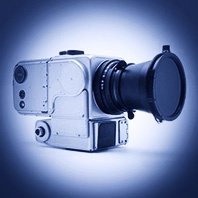Tag:
History
Māgha Pūjā is an important Buddhist holiday that is celebrated in Thailand, Laos, Cambodia, and Sri Lanka, on the day of the full moon, in the third month of the Thai moon calendar, in February/March. The word Māgha refers to month and Pūjā is the honoring. Legend has it that on this day 1,250 monks congregated to meet with Buddha.
Read more
The word »mooncalf« is connected to a sad story, because in earlier centuries it was used for calves that were born malformed. It was assumed that the Moon was responsible for this, which was generally seen as a symbol of the feminine and dark side of life. Not exactly fair toward the Moon and unfortunately characteristic for the attitude wanting to assign the good to the masculine and the evil to the feminine.
Read more
This classic of the surrealistic movie scene (the original in French »Un Chien Andalou«) by Luis Buñuel and Salvador Dalí, evoked mixed reactions when released in Paris, in 1929. Even from a current perspective, the movie polarizes, whereby its artistic value remains indisputable.
The approximately sixteen minute act consists of a series of individual sequences, which show different encounters of men and women. There are dream-like, symbolic, and partly absurd scenes that do not create a plot in the classic sense. Yet, the movie projects some sort of development, however, it remains incomprehensible.
Read more
Who does not know the »moon boots« – these bulky snow boots, which appeared in the 70’s and 80’s and have taken their claim ever since in the winterly fashion scene. The Italian Giancarlo Zanatta designed the shoes, inspired by the moon landing in 1969. Astronauts Neil Armstrong and Buzz Aldrin wore overshoes with wide soles, which provided the formal inspiration for moon boots. Zanatta took immediate care of the production of the shoes with his company called Tecnica, which is run by his son Alberto Zanatta today, and still sells up to 700,000 pair per year.
Read more
Buzz Aldrin (* 1930) is an American astronaut and the man, who, as part of the Apollo 11 mission on 21st July 1969, stepped onto the Moon as the second person, just after Neil Armstrong. He stood in the shadow of his colleague and one could assume that he may have suffered under these circumstances. But this was not the case, he did not really want to be in the spotlight and was satisfied coming second. After he set his feet into the dust 20 minutes after Armstrong did, he said: »Beautiful, beautiful. Magnificent desolation.«
Read more
A moon bridge is a pedestrian bridge, of which the semicircular arch completes a full circle through its reflection in the water and reminds of the full moon. In the old days, the high arch especially, served the purpose for barges to comfortably pass through underneath. Moon bridges originate in the Asian culture and were often built in Japanese and Chinese gardens. The mostly used materials were wood, stone and metal.
Read more
The medium-format cameras by the Swedish manufacturer Hasselblad, enjoy a legendary reputation and were – at least back then – probably the best cameras in the world. Not surprising that NASA chose exactly this brand during their equipment selection for their Moon missions. At that time, everything revolved around photographic quality of taking the pictures and moreso, around the reliability of the cameras. Back then, you did not have the opportunity to immediately examine whether a photograph turned out well, because all material could be developed only after the return to Earth. So, with regards to cameras there was the need to hedge one’s bets – inconceivable, if those photos would have turned out a complete flop.
Read more
When the sunlight appears on the Moon’s surface in a flat angle, interesting lighting effects are created, due to the mountains and valleys, which can be observed quite well from the Earth. A well-known effect is the so called »golden handle«. This is when the Jura Mountains (»Montes Jura«) are illuminated 4 to 5 days before the full moon and appear as a bright arc, in front of the still darkened Sea of Showers (»Sinus Iridum«) of the Mare Imbrium. This is reinforced by the fact that the boundary of light and shadow, which is called »terminator«, runs directly through this area.
Read more
Luna 2 was a Soviet space probe that impacted the Moon on 13th/14th September 1959. Space probes are unmanned flying objects that are used for exploration. In this case, it was about exploring the Moon, with the goal to fly a human to the Moon and have them return safely. History shows that this did not become possible until ten years later, with the moon landing of Neil Armstrong within the framework of the Apollo 11 mission, in July 1969.
Read more
The tarot is a pack of playing cards that is used for mystical interpretations. It has a long tradition, possibly dating back to the ancient Egyptian time. Playing cards started to circulate in Europe at around the 14th and 15th century, among them also the so called “tarock” (in Italian “tarocchi”), which is considered to be the predecessor of what is now known as tarot, and still today established independently as a game of cards.
Over time, the symbolism and interpretation begins to move to the forefront and the cards become a popular tool for mystics and fortune tellers.
Read more










